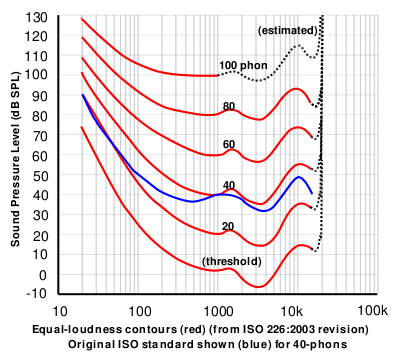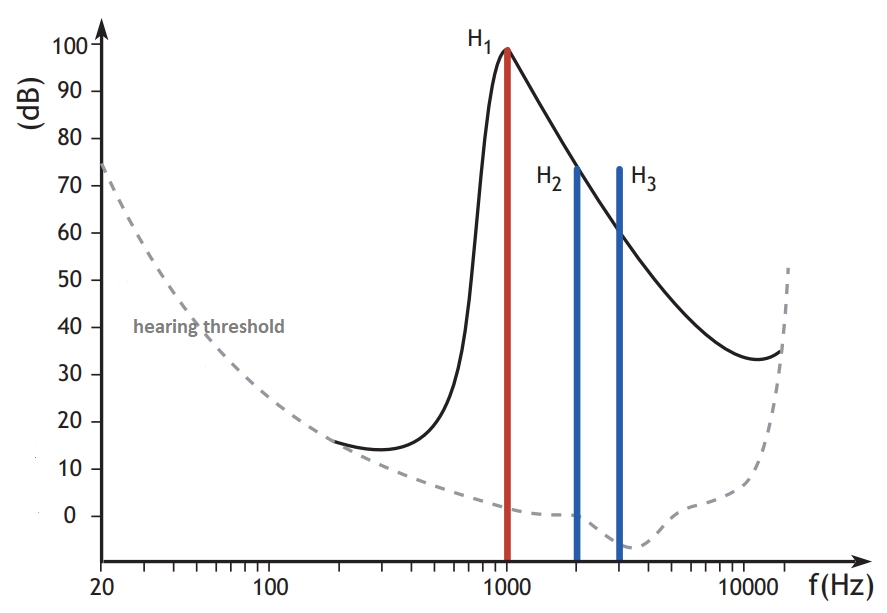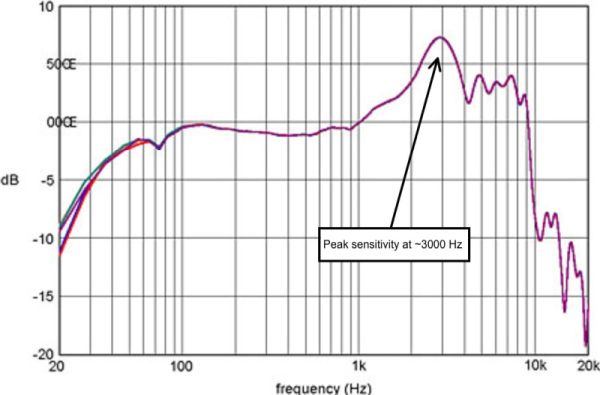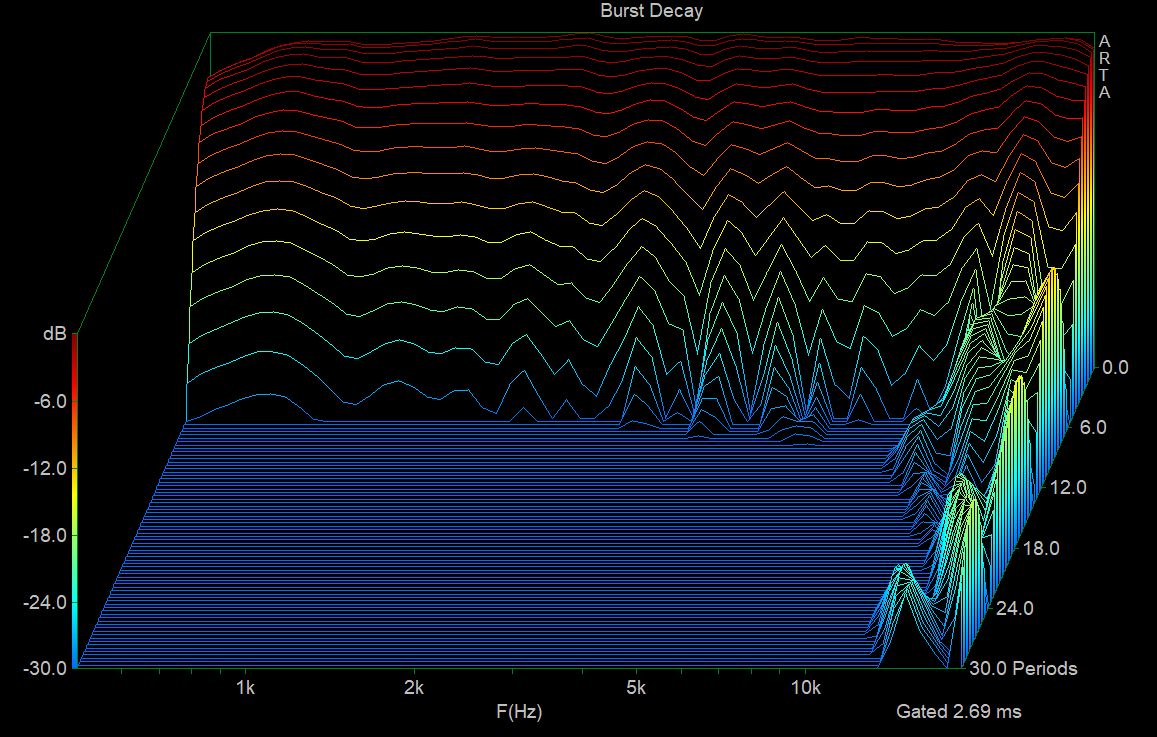Masking Effect & Audibility
Audibility
We are less sensitive to anomalies or even SPL drops above 10 kHz. This is due to the natural decline in our hearing sensitivity at high frequencies.
Here is our sensitivity according to frequency and SPL:

The bottom red line represents the sensitivity threshold of the human ear.
We must also consider that we live in a constant and measurable background noise. If a sound or a distortion (such as a high-order harmonic generated at high SPL) falls below this noise floor, it will be less audible—or completely masked.
Frequency Range and Information Density
From 10 to 20 kHz spans only one octave. This octave contains much less useful auditory information than lower bands. It’s rarely used by musical instruments or the human voice. In addition, our sensitivity in this region can be 10 to 20 dB lower than in the vocal range, making it very difficult to notice any issues—especially in the upper part of this octave.
The Masking Effect
The masking effect is a phenomenon where the presence of one sound (the masker) reduces the audibility of another sound (the masked).
This is particularly important when discussing low-frequency content and harmonic distortion.
Key Points
- Low-frequency masking: When a low-frequency sound is boosted, it can mask higher-frequency content. This can lead to a perceived loss of “kick” and a boomy or muddy sound.
- Frequency relationship: Masking is most pronounced when both sounds are close in frequency.
- Intensity: A louder masker will have a stronger masking effect.
- Distortion masking: This explains why high-order harmonic distortion (farther from the fundamental) is often more audible than low-order harmonics.
Here is how masking works from a fundamental tone:

Pierre-Yohan Michaud combined these aspects, audibility and distortion, in his thesis “Distorsions des systèmes de reproduction musicale : Protocole de caractérisation perceptive” (Distortions in Music Reproduction Systems: A Protocol for Perceptual Characterization):

In this example, we can see that H3 is in the audible range, whereas H2 falls within the masking zone.
Practical Case: subwoofer masking the kick
A common real-world example of masking is when excessive low bass (e.g. below 70/80 Hz) rises too quickly. This will mask the upper bass — especially the “kick”/impact around 100–200 Hz.
To learn how to avoid this and integrate your subwoofer without degrading impact and clarity, see the Subwoofer and Masking Effect section.
Audibility of Compression Driver Breakup
The main difference between compression driver diaphragm materials lies in the breakup frequency and the associated temporal behavior, which can be more or less violent.
In practice, these effects wil be inaudible if or because:
-
It’s placed high enough: Above 8–10 kHz, human hearing sensitivity decreases exponentially compared to its midrange sensitivity. Depending on age and individual hearing, sensitivity in this region is typically between −15 dB and −40 dB relative to midrange. This alone makes high-frequency breakup much less perceptible.

-
The temporal behavior is below human threshold: Breakup temporal issues are usually around −15 to −20 dB on a good diaphragm. Combined with the already reduced human sensitivity in this region, this can sum to roughly −30 to −35 dB, at the highest point, perceived by the auditory system, further reducing audibility.

-
Limited musical information: The affected high-frequency range contains very little actual musical content. Even if there are temporal artifacts, they are unlikely to be noticed by listeners if placed high enough and at a low enough level in terms of dB.
⚠️ Warning
Do not try to “correct” ear sensitivity. The brain is naturally adapted to the ear’s frequency response curve. Attempting to artificially “flatten” this sensitivity can result in unbalanced sound and may even damage your ears (hearing loss, tinnitus) due to overexposure in the high-frequency region.
A speaker must be flat at 30–60 cm, as explained here: how to implement my horn and my speaker
sources:
- AES - The Masking Effect: https://www.aes.org/e-lib/browse.cfm?elib=200
- Wikipedia - Auditory masking: https://en.wikipedia.org/wiki/Auditory_masking
- Wikipedia - Equal loudness contour: https://en.wikipedia.org/wiki/Equal-loudness_contour
- Pierre-Yohan Michaud thesis : https://theses.hal.science/tel-00806288v1/document
- Frequency response of the human ear: https://www.compadre.org/nexusph/course/Frequency_response_of_the_human_ear